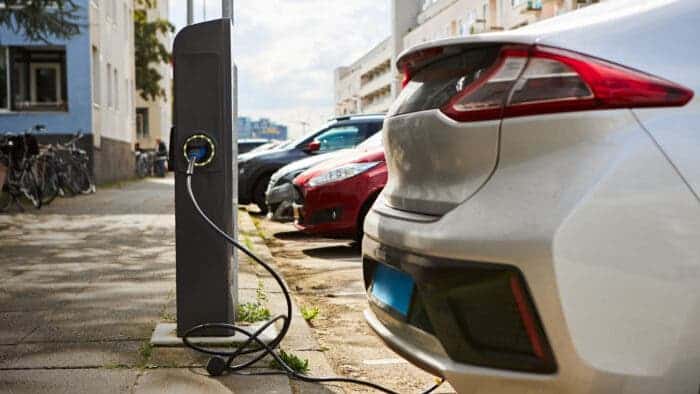The automotive industry is undergoing a metamorphosis, with electric vehicles (EVs) rapidly transitioning from niche products to mainstream transportation solutions. This surge in EV adoption necessitates a robust network of charging stations to eliminate range anxiety, a major concern for potential EV owners. Fortunately, Google Maps is at the forefront of this evolution, introducing a suite of AI-powered features designed to make finding charging stations a seamless experience for EV drivers.
Simplifying Electric Vehicle Journeys: Google Maps Enhances Charging Station Search with AI
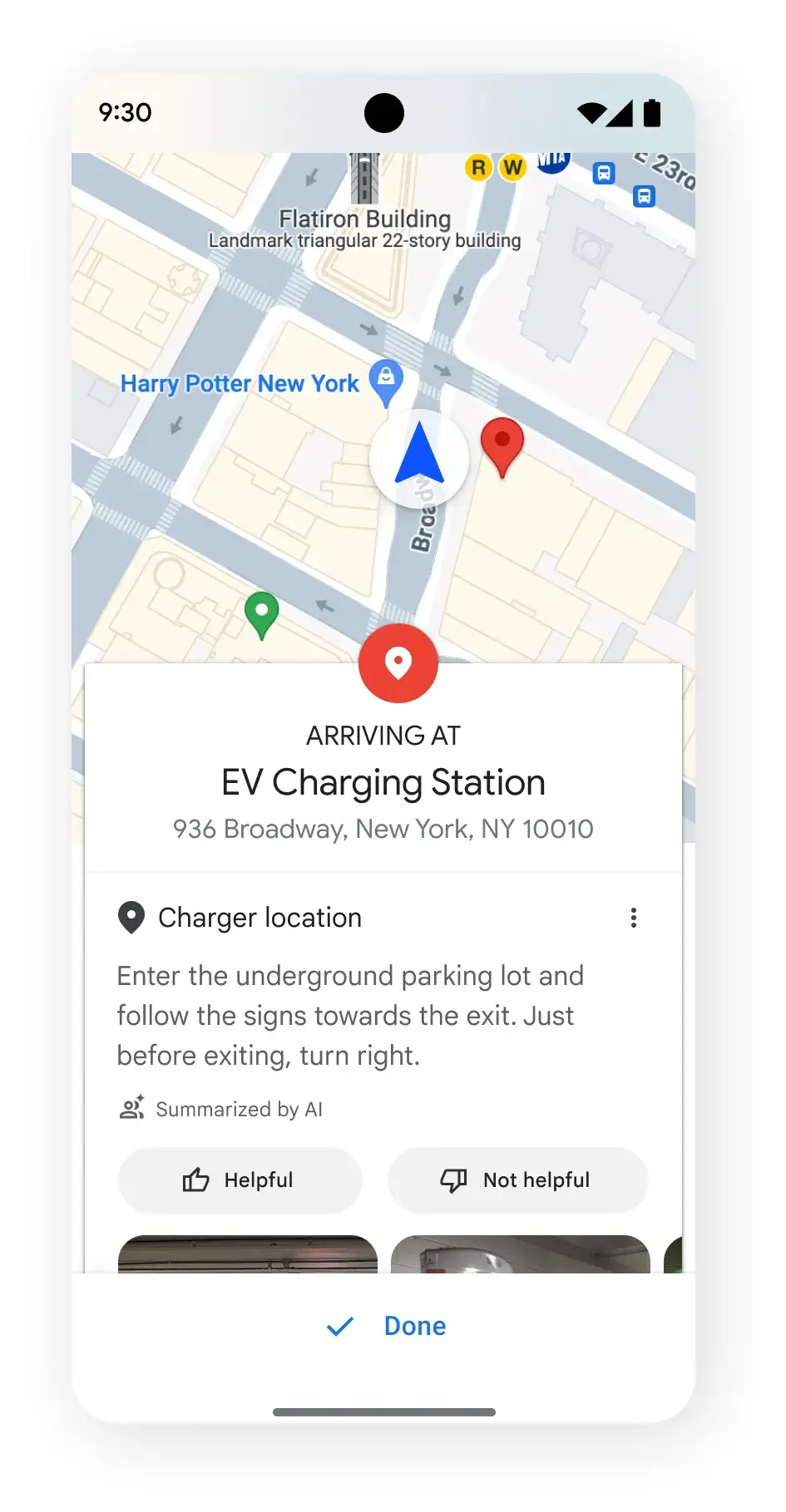
Leveraging the Power of AI for Granular Information
Imagine navigating to a charging station only to discover it’s tucked away in a dimly lit corner of a multi-level parking garage. This frustrating scenario becomes a thing of the past with Google Maps’ innovative approach. The app will leverage the collective wisdom of user reviews, empowered by AI analysis, to provide detailed location information. Think of encountering a Google Maps prompt that reads, “Enter the underground parking lot and follow signs for ‘Customer Pick-Up.’ Turn left at the second ramp and the charging station will be on your right, opposite the elevator bank.” Such granular details, culled from AI-powered analysis of user reviews, will significantly improve the user experience.
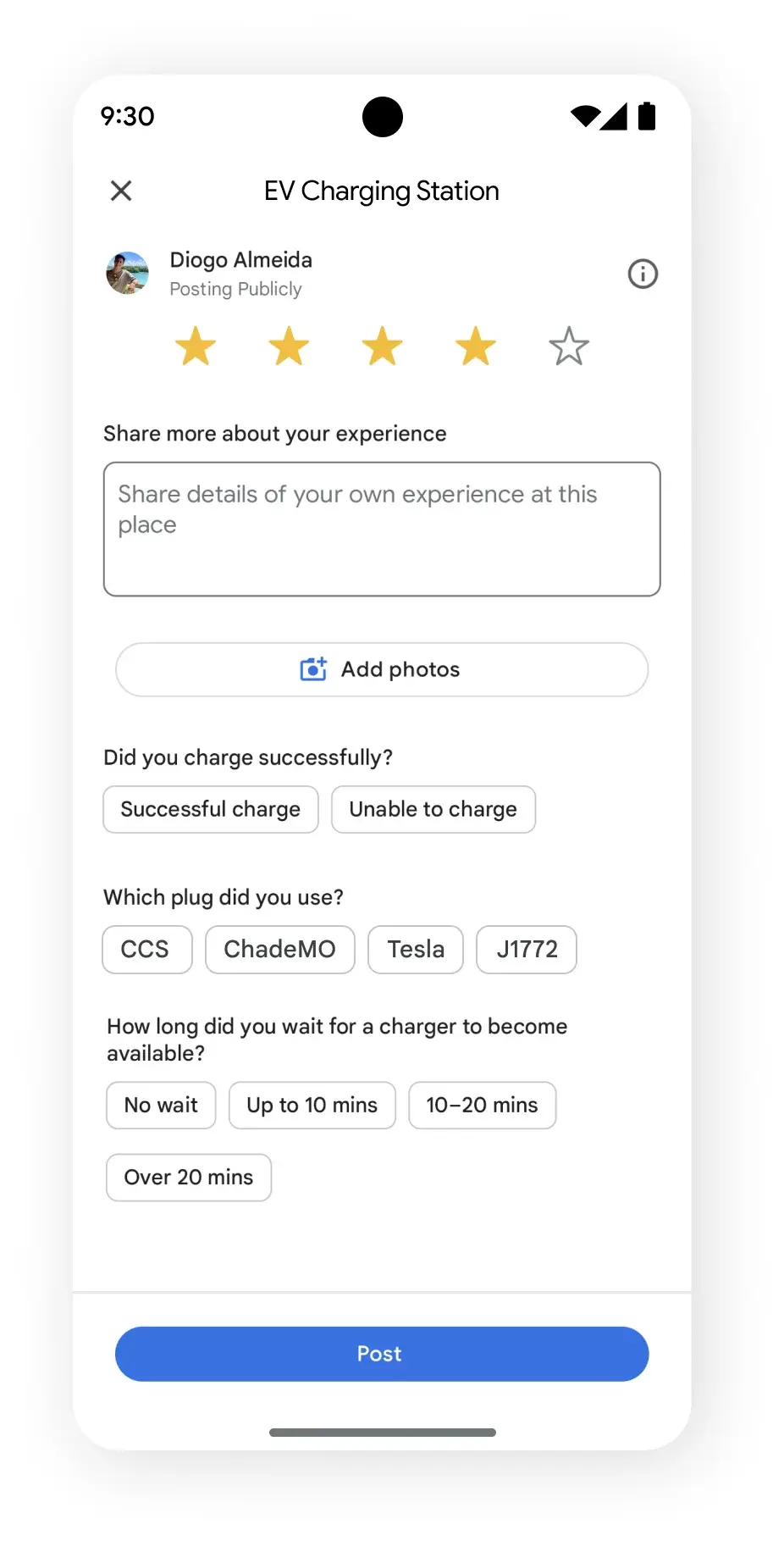
Beyond Location: Unveiling Real-Time Availability and Speed Transparency
The benefits extend far beyond precise location details. Google Maps will transform into a one-stop shop for all things EV charging. The app will display real-time information regarding charging station availability, eliminating the worry of arriving at a station only to find all ports occupied. This transparency empowers drivers to make informed decisions and avoid unnecessary detours. Additionally, the app will showcase the charging speeds offered by each station. Whether aiming for a quick top-up during a grocery run or a full charge for a long-distance trip, users will have the necessary data to optimize their charging experience.
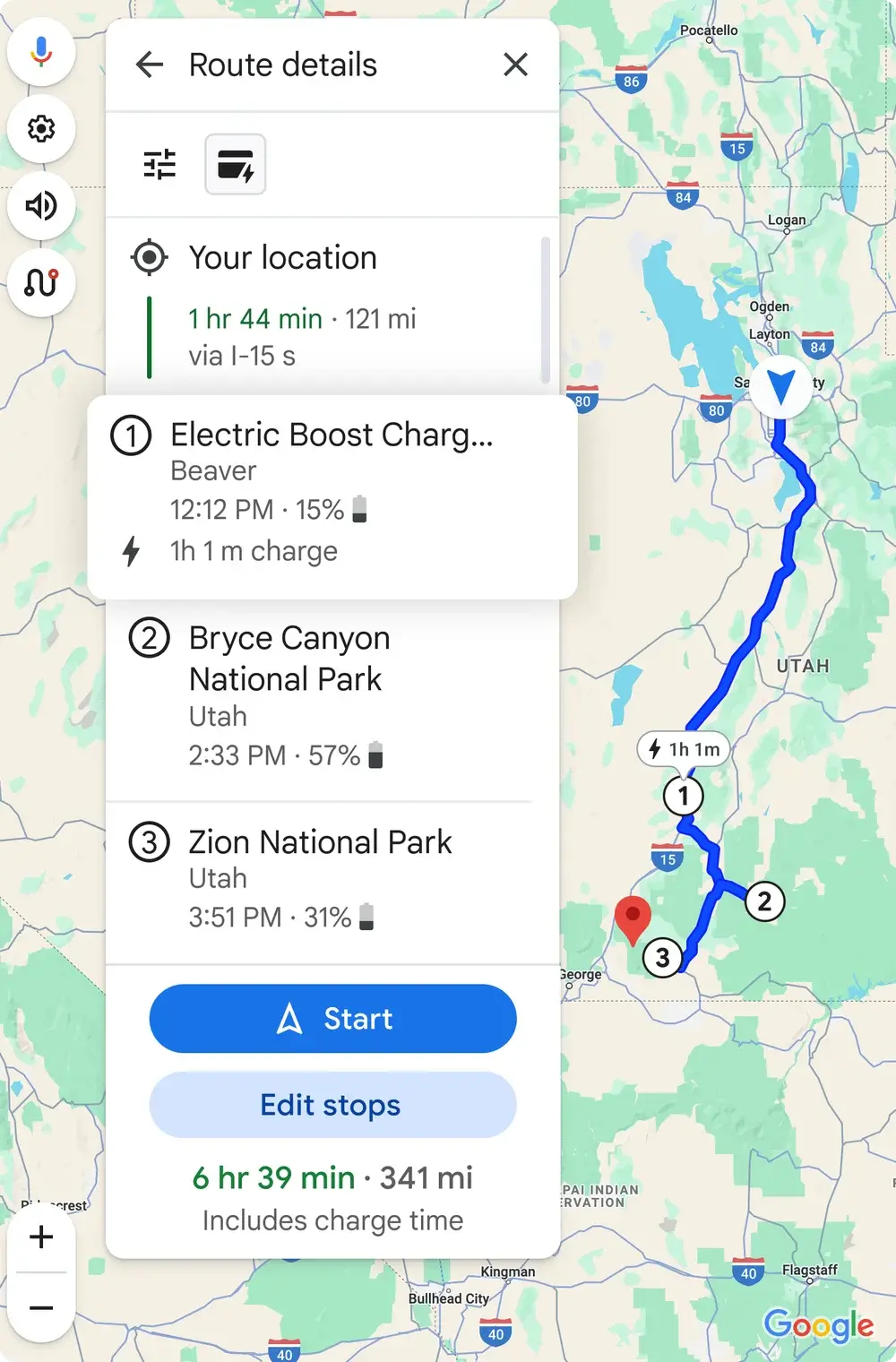
Streamlining Multi-Stop Journeys: AI-Powered Charging Stop Recommendations (Expanding on Exclusivity)
For those planning road trips with their EVs, Google Maps is introducing another layer of convenience with route optimization. The app will leverage AI and user data to suggest optimal charging stops along the route, factoring in the vehicle’s current battery level, estimated driving range, and real-time traffic conditions. This eliminates the need for manual planning and ensures a stress-free journey with strategically timed charging breaks. While the initial rollout might prioritize cars equipped with Google’s built-in software for deeper integration, the long-term vision likely involves extending these functionalities to a broader range of EVs through partnerships with car manufacturers and third-party data providers. This wider accessibility will be crucial for fostering a truly inclusive EV ecosystem.
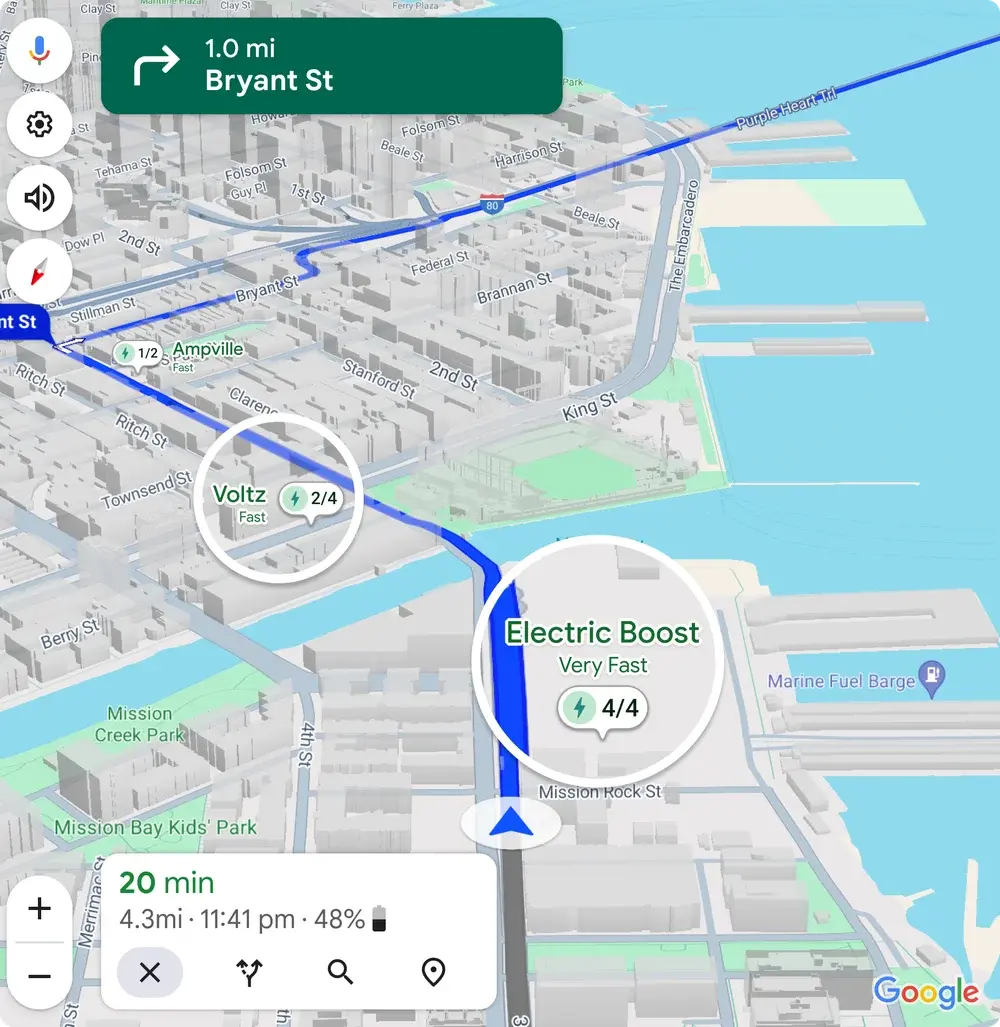
Fostering a Collaborative Ecosystem Through User Reviews
The success of these new features hinges on a collaborative user community. Google’s existing system of user reviews, which constantly updates information about various locations, plays a critical role. By sharing details about their charging experiences, such as the type of outlet used, wait times encountered, and even the functionality of the charging station (e.g., operational, temporarily out of service), EV owners can contribute valuable data that enriches the AI model and benefits the entire community. This collaborative approach ensures that charging station information remains accurate and reflects real-world conditions. Gamification elements, such as badges for frequent reviewers or contributions to particularly helpful reviews, could further incentivize user participation.
Gizchina News of the week
Global Rollout Strategy and Integration with In-Car Systems
While specific dates haven’t been announced, Google has confirmed a global rollout of these exciting updates in the coming months. The initial phase will likely focus on vehicles equipped with Google’s built-in software, which will enable even deeper integration between the car’s system and the Google Maps app. This can potentially include displaying nearby charging stations directly on the car’s dashboard display, along with real-time availability and estimated charging times. Additionally, voice-activated commands for searching and navigating to charging stations could further enhance user convenience and safety by minimizing driver distraction.
The Road Ahead: A Future Focused on EV Infrastructure and User Centricity
Google Maps’ commitment to improving the EV charging experience signifies a broader industry-wide shift towards prioritizing EV infrastructure. As the number of EVs on the road continues to rise, ensuring a robust and user-friendly network of charging stations is crucial. By leveraging AI, real-time data, and user collaboration, Google Maps is paving the way for a more seamless and convenient future for electric vehicle travel. However, Google’s role extends beyond simply providing a navigation tool. The company can play a significant role in advocating for increased investment in public charging infrastructure, particularly in underserved areas. Additionally, fostering partnerships with charging network providers and renewable energy companies can accelerate the creation of a sustainable and efficient EV ecosystem.
Beyond the Current Scope: Potential Areas for Future Development
While the announced features represent a significant step forward, there’s always room for further innovation. Here are some potential areas Google Maps
could explore in the future:
-
Integration with Charging Networks: Partnering with charging network providers could unlock a whole new level of functionality. Imagine features like reserving charging slots in advance, similar to booking restaurant tables. This would eliminate the anxiety of arriving at a busy station and having to wait in line. Additionally, direct payment integration through the Google Maps app would streamline the charging process. Allowing users to pay for their electricity seamlessly without fumbling with cash or credit cards at individual charging stations.
-
Advanced Filtering Options: EV drivers have diverse needs when it comes to charging. Google Maps could cater to these preferences by offering advanced filtering options. Users might benefit from filtering stations based on charging speed (e.g., Level 2, DC Fast Charging), connector types (e.g., CCS, CHAdeMO), and amenities offered at charging stations (e.g., restrooms, restaurants, Wi-Fi access). This level of granularity would empower drivers to locate stations that perfectly align with their specific requirements.
-
Crowdsourced Wait Time Estimates: Real-time availability information is a valuable first step, but it doesn’t necessarily provide a complete picture. Incorporating crowdsourced wait time data from user reports could provide a more accurate picture of charging station congestion. Imagine the app displaying an average wait time alongside the availability status. Allowing drivers to make informed decisions about whether to stop at a particular station or continue to the next one. This would be particularly helpful for long-distance travel or during peak hours when charging stations are more likely to be busy.
-
Integration with Renewable Energy Sources: Sustainability is a core tenet of electric vehicle adoption. Google Maps could integrate with data sources that track the source of electricity used by charging stations. This would allow users to prioritize stations powered by renewable energy sources. Such as solar or wind power, further reducing their environmental impact.
-
Personalized Charging Recommendations: Taking user preferences into account, Google Maps could personalize charging recommendations. For instance, a driver with a daily commute might prioritize stations located near their workplace or home for convenient overnight charging. Conversely, a driver who frequently takes long road trips might prioritize stations located along major highways, offering faster charging speeds.
By continuously innovating and expanding its functionalities, Google Maps has the potential to become an indispensable tool for EV owners, empowering them to confidently navigate their electric journeys. This, in turn, can further accelerate the adoption of electric vehicles, fostering a more sustainable future for transportation. Ultimately, Google Maps’ evolution into a comprehensive EV charging ecosystem can play a transformative role in shaping the future of electric mobility.

